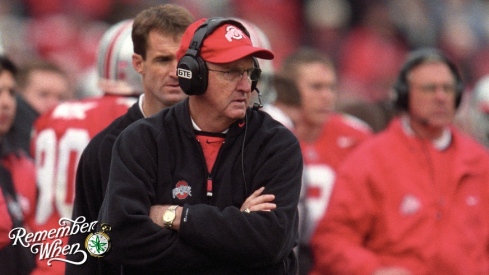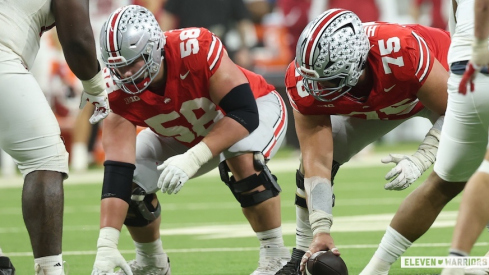
After examining Clemson's base concepts we turn to opponents' efforts to defend the Tigers' offense.
Perhaps surprisingly – given the talent at certain skill positions – Clemson's offense has periods of relatively low scoring output. This is particularly noticeable against better competition.
Opposing defenses slowed Clemson by playing middle of the field safety coverage and cheating additional defenders in the box. The Tigers also hurt themselves with turnovers.
But it remains to be seen whether the Ohio State defense – which has allowed one of the higher points per possession amongst BCS teams – can utilize a similar formula.
Below I address Clemson's offensive efficiency, how teams have defended the Tigers, and Ohio State's potential game plan.
Good BUT...
Chad Morris' spread, with players such as Tajh Boyd and Sammy Watkins, provides all signs of being a high-powered offense. And that is true – to a point. The Tigers' offense is 17th in Football Outsiders' combined rankings.
But the Tigers' had periods of relatively inefficient offensive output. Most importantly, the Tigers average 2.72 points per possession, tied for third lowest amongst BCS teams. By comparison, Ohio State is ranked second in offensive F +/-, and averages 3.42 points per possession.
So What Went Wrong (Or Right)?
Clemson's lowest offensive outputs in 2013 demonstrate a pattern. Boston College, Florida State, and South Carolina limited Clemson to 55 total points, or a little more than 18 points per game. All three utilized a similar formula. Opponents brought a safety into the box, cheated their slot defender into the gray area, and played middle of the field cover 1. (H/T: Rotoworld)

Opponents deployed this aggressive formula to slow the Tigers' run game and put Clemson in second and third and long situations, where the Tigers' play action passing game is less effective. Once in must pass downs, defenses sent a variety of blitzes, forcing Boyd to move his launch point and keeping him off-balance.
Below South Carolina forced a Boyd fumble with a basic fire zone blitz. The Gamecocks bring two field rushers, drop the boundary defensive end, and play three deep, three under behind the rush.

The aggressive defensive posture left Clemson's opponents vulnerable to explosive plays from Sammy Watkins, but teams overcame it by keeping the Clemson offense off-rhythm.
A Good Formula, But...
Although opponents successfully deployed this strategy against the Tigers, it is unclear whether Ohio State can duplicate the formula. The Buckeyes' linebackers and secondary were unable to consistently play man this year without succumbing to big plays.
Look for the Buckeyes to use a variation – by bringing safety CJ Barnett into the box and using a middle of the field safety, but playing cover 3. The Buckeyes may mix in some man coverage but it is hard to imagine them relying upon it for extended periods. The key match-up is the Buckeyes' rebuilt secondary, with nickel Tyvis Powell moved to free safety and freshman Vonn Bell entering at nickel. A key question arising from this new lineup is whether defensive coordinator Luke Fickell seek to protect those defenders, or will he feel enabled to play more man coverage?
The other match-up to watch is whether and how the Ohio State defense creates pressure. Boyd is susceptible to forcing plays and creating turnovers when the pocket collapses. Can Ohio State create pressure with their front four, or does Fickell emulate Clemson's prior opponents' strategy and blitz in passing downs? Look for the Buckeyes to mix blitzes from linebackers Ryan Shazier and Josh Perry, but the Buckeyes must do a better job not getting beat over the top when trying create a rush.
Getting Stops
Clemson is a stellar offense, but strong opponents have caged the Tigers by forcing Clemson out of its comfort zone and forcing turnovers. It is perhaps unrealistic to expect the Buckeye defense to hold Clemson to less than 20 points. But Ohio State must create stops and/or turnovers to give the Ohio State offense a chance to succeed.

